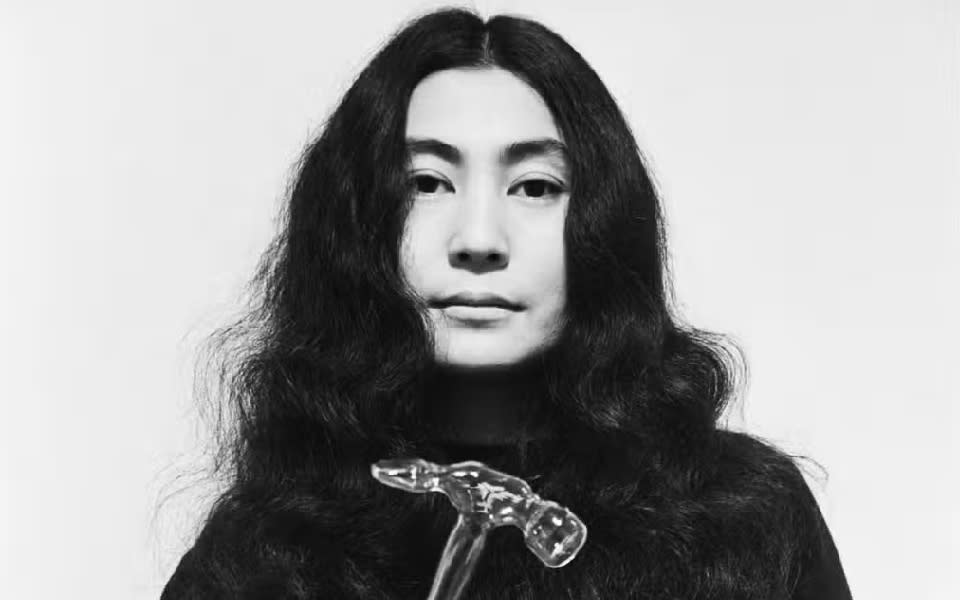Yoko Ono at the Tate Modern: Funny, sad and quietly brilliant

What strikes you about this giant Yoko Ono retrospective at the Tate Modern is how much fun she is. Despite producing art for more than seven decades and being at the heart of the biggest counter-cultural movement in modern history, she’s still often dismissed as the inscrutable, unsmiling woman who tore the Beatles apart.
Now aged 90 and “retired from public life,” she does not appear to care. As you enter this exhibition, you’re greeted by the sound of a flushing toilet, for reasons – if there are reasons – that elude me. It’s absurd. It’s funny.
While pioneering performance works such as Cut Piece – for which Ono invited audience members to snip away her clothing piece by piece – anticipated the work of Marina Abramovic, Ono is perhaps at her best when highlighting life’s small absurdities. Bag Piece, for instance, invites people to crawl inside sacks and communicate without the baggage of our human forms; there is a platform for gallery-goers to recreate this.
A fundamental difficulty with displaying Yoko Ono’s work is that much of it is intangible. She produced dozens of “instructions” – a kind of poetic blueprint for a potential piece of art. “Cut a hole in a bag filled with seeds… and place the bag where there is wind,” reads one. Some of these instructions, such as “Drill a hole in a canvas and put your hand out from behind. Receive your guests in that position,” are made real, and, again, participation is encouraged.
While there’s an inevitable sparsity to the curation – her art is largely made up of small written notes and black and white videos – there’s also a real sense of shared experience. One room opens up like a community hall: you can sit at tables and play chess with all white pieces “until you forget” which are yours. You can lounge on beanbags and watch John and Yoko’s famous Bed-ins.
Her relationship with Lennon is handled well, showing them as a formidable unit, creating together, neither one overshadowing the other. It’s genuinely touching.
The further you weave through the galleries, the more interactive things become. There’s a wooden canvas into which you can hammer nails. Refugee Boat is an entirely white room with a white rowing boat, upon which people are encouraged to doodle – walls, floor, boat – with blue marker pens.
The final corridor is an installation space called My Mommy is Beautiful, where Ono asks visitors to write messages about their mothers and pin them to the walls. “It’s complicated,” reads one. “I miss her,” reads another.
When viewed en masse, these pieces begin to form a coherent thesis: they break down barriers, showing – again and again and again – that we’re all the same. We all have mothers, we all want peace, we all find toilets funny.

 Yahoo Finance
Yahoo Finance 